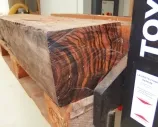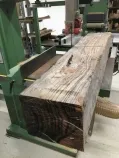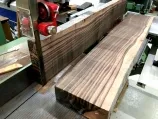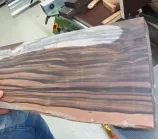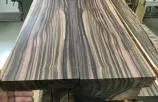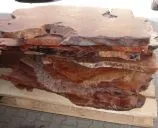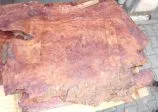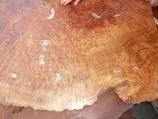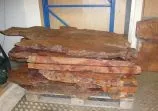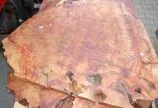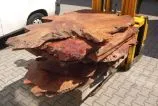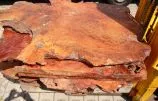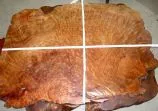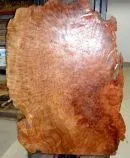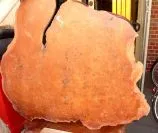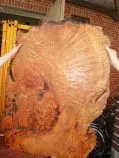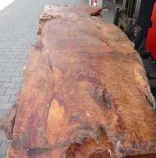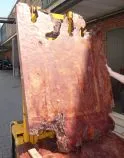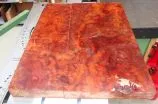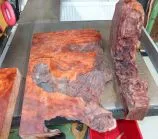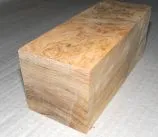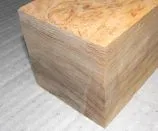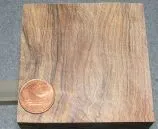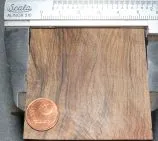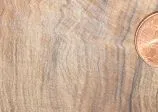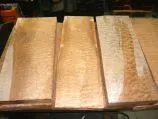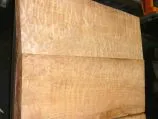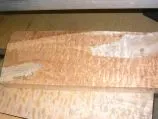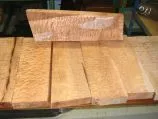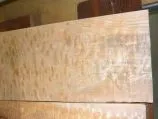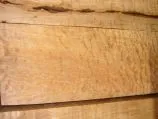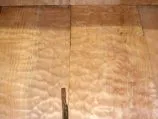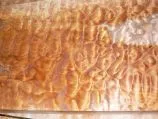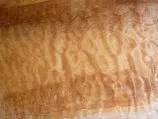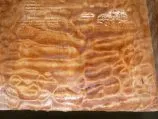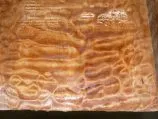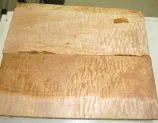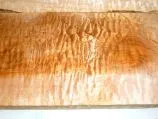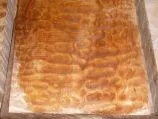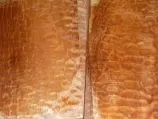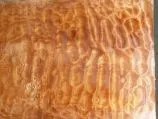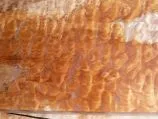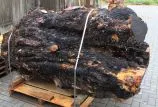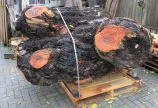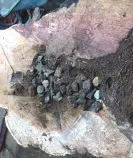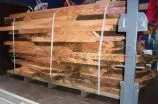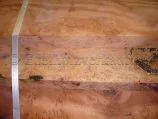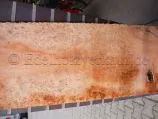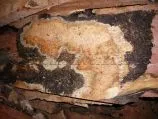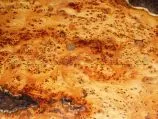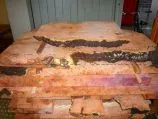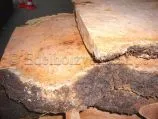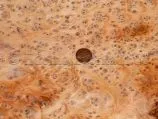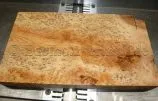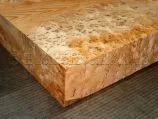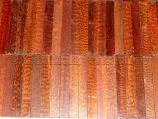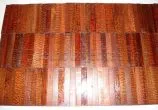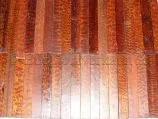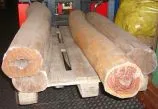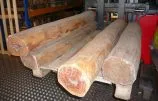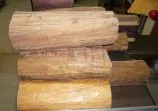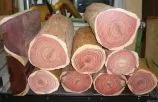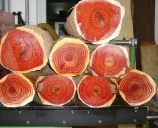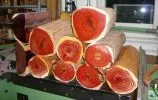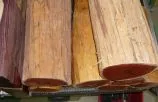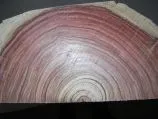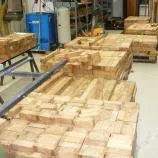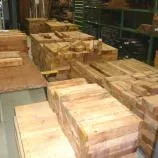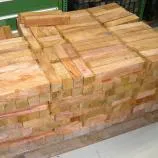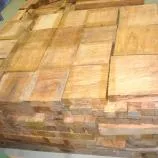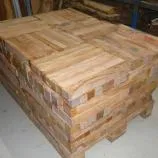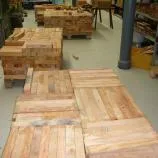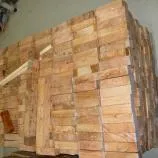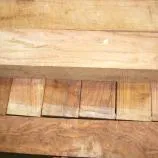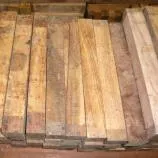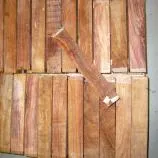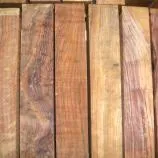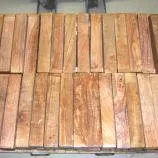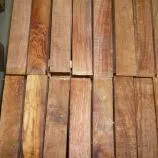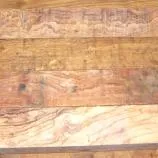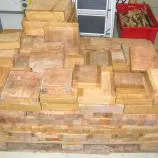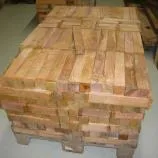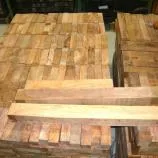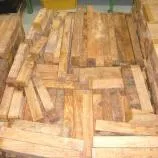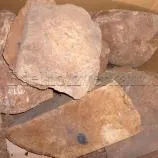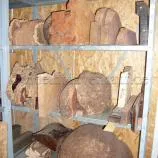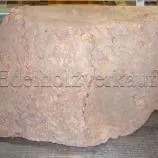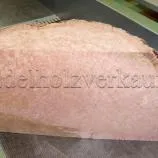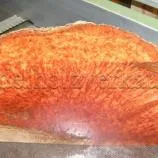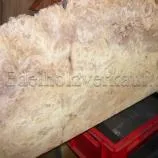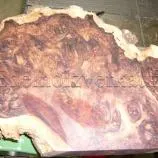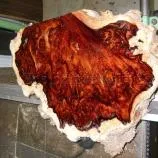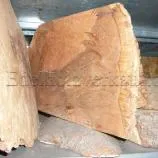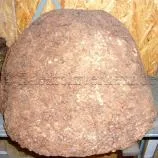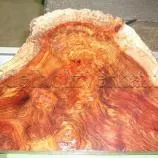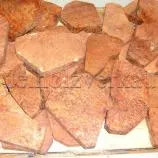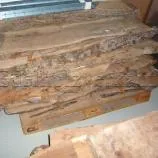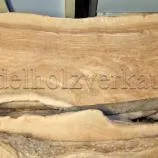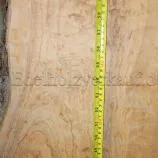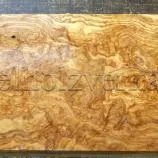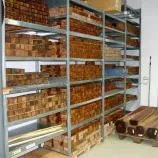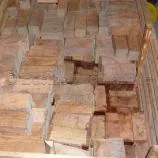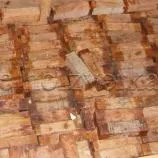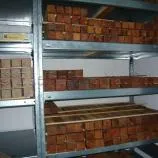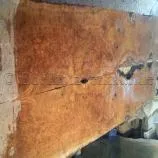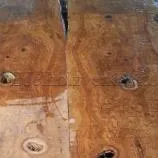Shipping country
Wood Species
News
The wood of the camphor tree is not only very beautifully structured, it shows many burly eyes, buds, swirly grain and wild growths, in addition it smells very beguilingly pleasant and fresh. There are some really beautiful already sanded and primed thick slabs which are wonderfully suitable as table tops and will not only look beautiful, but also attract the attention of all.
The camphor tree (Cinnamomum camphora) belongs to the family of laurel trees whose original growth area Taiwan, Japan and the southeast of China is. Today, larger populations can be found in Thailand, Laos and Vietnam. The trees, which grow up to 30 m tall and often become very old, have the typical shiny leathery leaves of the laurel family. The wood of camphor trees has a unique strong, spicy aromatic scent, which most people know from cold ointments or tiger balm. The camphor oil contained in all plant parts plays an important role in medicine, but it is also important for perfume production.
The wood gains every wood craftsman by a silky charisma, it is medium-hard, approx. 550 - 650 kg/m3 heavy and can be worked excellently, it is particularly resistant against rotting and any pest infestation. For this reason, old sailors sea chests were always made of camphor wood, because this was not attacked by exotic insects and the laundry in it always smelled pleasantly fresh!
The tree can develop really huge burls, which show a beautiful fine cloudy grain and whose colours can range from light brown-grey to yellowish-green and red-brown to deep dark red. Large slices of camphor burl are certainly among the rarest and most beautiful burl woods in the world.
Even after more than 30 years in the wood trade, there are moments when you pause in your routine and take a closer look at an everyday situation: with me it was like this a few days ago when I wanted to photograph a few pieces of olive wood.
In the course of many years, thousands of pieces of this always fascinating, beautiful and also so fragrant wood have passed through my hands, and yet I suddenly took a closer look at this beautifully grained piece of Greek wild olive and was immediately impressed by the fineness and the very narrow annual rings of this 60 x 60 mm measuring scantling- I decided to take a closer look at it. In order to do this, I took a macroscopic picture of the end of the brain and looked at the photo with a magnification of about 4 times on the screen. To make a long story short: I counted the annual rings and thus the time this piece of wood took to become what lies in front of me on the table.
It is about 65 years, which can be counted relatively exactly on the magnification. This means that the tree from which this piece comes has grown a little less than a millimetre per year, which is a very low figure for an olive tree growing in the Mediterranean under the best climatic conditions. When you then see the impressive large trees in these countries, you get an impression of the time that these slowly growing Venetian olive trees brought. In many countries like Italy and especially in Spain whole olive groves are leveled, the trees are cut down with excavators and processed into firewood. What a sin!
Our wood comes from an island, on which is managed sustainably and only olive trees may be felled, which because of their high age, no longer bear fruit or have become rotten, or where the wood is cut back anyway through pruning and care measures. That this wood cannot be compared with the turbo-fertilized ultra-fast grown and coarse-year-old Italian olive wood, sees everyone at first sight, which looks once more exactly. These photos speak for themselves!
We were able to achieve some first-class quilted maple, in German also called cloud maple into our shelves. This wood, which results from a very special undulated wave-like abnormal growth of the wood fibres, is very rare, uniquely beautiful in its three-dimensional surface and unfortunately, because internationally appreciated and sought after by guitar builders, also very expensive. But if you hold this wood in your hands and then touch it, because you can't believe that this three dimensional looking surface is really flat, you know what its all about quilted maple. Some finest guitar decks will be resawn from these billets soon!
Sometimes the acquisition of new interesting and rare wood can take quite a long time, but stability often leads to the goal: this gigantic block yew burl was on my shopping list for a long time, but it could only be bought by me after a long time. As always with the purchase of round wood, the anxious question here is: What does the log look like from the inside, does the wood keep what it promises to contain from the outside after cutting the log?
In this case the affair turned out well, and the first impressions from the sawmill were already very promising: you could very fine burl wood, extremely slow-growing and fine-grained, this log represents a real special feature and rarity. But this trunk contained not only finest burl wood, but also a respectable quantity of large gravel stones, which had grown inside the giant block and probably found their way into the crown of this mighty tree by human hand. In any case, these stones could have been used for paving a path in the sawmill, so that these unwanted innards could also have found a meaningful use.
Snakewood pen blanks and knife blocks are frequently sold in our webshop. Unfortunately these were often sold out quite fast, so that these articles were not always available. We have now again a nice selection of really beautifully figured snakewood in AAA grade in stock. You can find these articles here!
We have again done something very old-fashioned: we have bought a few tons of the most beautiful olive wood in form of scantlings and blocks. But as beautiful as this wood may be, it will disappear for several years into our climate-regulated wood store in shelves, where it has to dry slowly and very carefully to a processable moisture content. As sorry as we are ourselves, and as much as we would love to sell these woods right now, so old-fashioned are our principles as timber merchants: You as our customers should not have any nasty surprises with cracks or warping later on when working on them! Putting your work and time into a beautiful wild piece of wood, in order to have to accept a loss of the created object, is a bitter disappointment. And so that this does not happen, we only deal with dry wood, even if the business dogma is that a warehouse has to be turned over as quickly as possible: we flout about such truism and forget about our wood for a few years on the shelf. Even if other suppliers offer soaking wet fresh wood, there is only seasoned and dry wood for the sale of precious wood. Our customers have appreciated this since 2005.
But even if we only make your mouth water, we are all so happy about the uniquely beautiful wood that we dare to say a few words about it: It is really beautifully grained wood that comes from centuries-old olive trees - unpacking the pallets is a feast for eyes, hands and nose: The often wildly flamed and very decorative wood does not only look beautiful, each piece is unique and reflects the history of a centuries-old olive culture in the Mediterranean. But it is not only very beautiful, heavy and dense, it also smells indescribably pleasant, a little bit like olives, a little bit like wild fruit, with a pinch of tangy, spicy woody scent, always very aromatic - the smell is difficult to describe. The rest is told by the pictures!
We have received another nice and large batch of burls from all over the world, have a look at some of the pieces and enjoy looking on those beauties! We are looking forward to seeing them soon in our shop: There are burls of Rosewood, Flexuosa, Chechen, Laurel and Thuya among them, some of which we still have to clean, determine and plane to reveal their beauty!
One of our most beloved and beautiful woods is certainly olive wood, not the common species, growing fast in Portugal, Spain or Italy, nearly always grained boringly and coarsely. This olive wood comes from trees, which were often bred and artificially fertilized for this purpose and therefore mostly show little exciting grain and are straight grown. Our olive wood, like all our other woods, is carefully hand-picked and comes from wild grown olive trees that are often centuries old, which the Venetians planted at the Mediterranean Sea in the 16th century. Even today, they are still different from all other varieties of olive trees, as they grow slowly and devoured, making their wood something very special, the pictures show this. We now have a few tons of them in stock again, and since we generally only offer dry wood to our customers, ready for immediate working, many of these pieces of olive wood will remain in our shelves for a few more years until they are slowly and gently dried to such an extent that we can sell them with a clear conscience. This distinguishes our business from the peasant competitors who sell fresh wood, with whom you will experience unpleasant surprises, as the wet wood will warp and tear.

